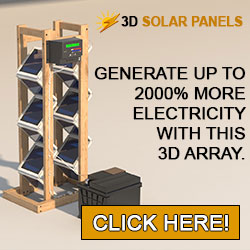In recent years, the demand for solar energy has soared as people look for sustainable and cost-effective ways to power their homes. With advancements in technology, there are now multiple options available for harnessing the power of the sun. Two popular choices are the Backyard Revolution solar system and traditional rooftop solar panel systems. Each approach has its own set of advantages and disadvantages, including factors like cost, installation, maintenance, and energy output. In this article, we will explore and compare these aspects to help you make an informed decision.
-
Cost: The cost is often a significant consideration for homeowners when choosing a solar system. Traditional rooftop solar panel systems typically involve the installation of multiple panels on the roof. This installation process can be labor-intensive and may require the expertise of professionals, increasing the overall cost. On the other hand, Backyard Revolution solar systems offer a more affordable option. They use a compact design with vertical solar panels that can be installed easily by homeowners themselves, reducing installation costs.
-
Installation: Installation plays a crucial role in determining the feasibility of a solar system. Traditional rooftop solar panels require ample roof space that is unobstructed by shade or other structures. Additionally, the panels need to be angled correctly for optimal sunlight exposure. This often necessitates professional assistance and may involve time-consuming permits and inspections. In contrast, Backyard Revolution solar systems are designed to be space-efficient and can be installed in a relatively small area, such as a backyard or even a balcony. The simplified installation process makes it more accessible to homeowners without specialized knowledge or professional help.
-
Maintenance: Both Backyard Revolution and traditional rooftop solar systems require some level of maintenance. Traditional solar panels are exposed to the elements and may need regular cleaning to remove dust and debris. Additionally, the panels may require occasional inspection for any damages or malfunctioning components. In comparison, Backyard Revolution systems have a simpler setup and fewer components, potentially reducing the maintenance requirements. However, as with any solar system, it is important to keep an eye on the system's performance and address any issues promptly.
-
Energy Output: When it comes to energy output, the size and orientation of the solar panels play a crucial role. Traditional rooftop solar panel systems typically have a larger surface area, allowing for more solar panels to be installed. This larger capacity translates into a higher potential energy output, making them suitable for households with high energy demands. Backyard Revolution solar systems, although compact, can still generate a significant amount of electricity. The vertical orientation of the panels maximizes sunlight exposure during peak hours, ensuring efficient energy production.
-
Flexibility: Flexibility is another factor to consider. Traditional rooftop solar panels are fixed in place and may not be easily adjustable to optimize sunlight exposure throughout the day. Backyard Revolution systems, with their vertical panel design, have the advantage of being adjustable. Homeowners can pivot the panels as needed to capture the most sunlight during different times of the day or year. This flexibility allows for better energy generation and the ability to adapt to changing weather conditions.
In conclusion, both Backyard Revolution and traditional rooftop solar systems have their own unique advantages and disadvantages. Traditional systems offer higher energy output potential but require more significant upfront costs, professional installation, and ongoing maintenance. Backyard Revolution systems provide a more affordable option, easier installation process, and increased flexibility, albeit with a slightly smaller energy output. Ultimately, the choice between the two depends on individual preferences, budget, available space, and specific energy requirements. It is recommended to evaluate these factors carefully before making a decision to ensure the chosen solar system aligns with your needs and goals for sustainable energy consumption.






0 ความคิดเห็น